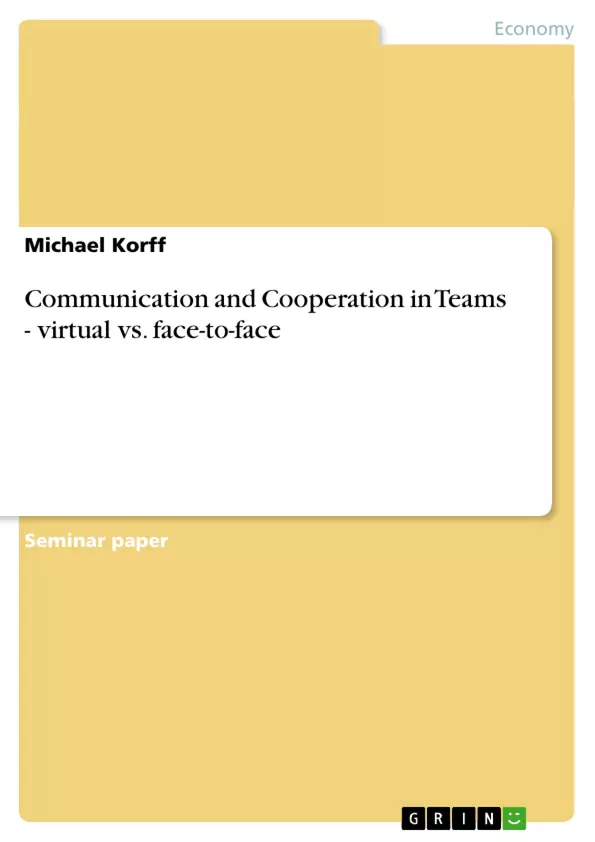The growing significance of computer and internet as a work and communication medium can observe increasing tendencies of decentralization, mobilization and mechanization of our work. That means the interest in virtual cooperation rises strongly in many enterprises. This kind of labour organization offers the possibility of concentrating the knowledge of different co-workers and/or external specialists also over long distances (over countries or even continental borders) in a team. However, the unification of specialist and expert knowledge is made possible by the use of suitable in-formation and communication technologies only. With these aids this knowledge is (apparently) callable without any larger temporal delay. That brings substantial cost advantages by a shortened achievement completion and decreased travel times and costs and makes a contribution in such a way through cost optimization to the receipt and for the increase of competitive ability. In order to be able to ensure efficient working in virtual teams at all a set of basic conditions must be considered. Substantial factors apart organization of work and used instruments are humans involved in that process, especially their communication and cooperation behaviour. This essay will briefly examine what kind of differences in communication and cooperation exist between a virtual and a conventional (face-to-face) team. [...]
Inhaltsverzeichnis (Table of Contents)
- Introduction
- Aspects of teamwork
- Team
- Special requirements on virtual team members.
- Communication.
- Leadership......
- Knowledge Transfer.
- Summary
Zielsetzung und Themenschwerpunkte (Objectives and Key Themes)
This essay aims to explore the differences in communication and cooperation between virtual and conventional (face-to-face) teams. It examines the challenges of virtual teamwork, focusing on the specific requirements for virtual team members, communication strategies, leadership styles, and knowledge transfer processes.
- Differences in communication and cooperation between virtual and face-to-face teams.
- Challenges of virtual teamwork.
- Special requirements for virtual team members.
- Communication strategies in virtual teams.
- Leadership styles in virtual teams.
Zusammenfassung der Kapitel (Chapter Summaries)
- Introduction: This chapter introduces the rising significance of virtual teamwork in today's world, highlighting the benefits of collaboration across physical boundaries. It emphasizes the importance of communication and cooperation in virtual teams to ensure efficient working.
- Aspects of teamwork: This chapter defines the concept of a team, emphasizing its shared goals, mutual dependence, and the importance of cohesion and cooperation. It differentiates between conventional and virtual teams, outlining the unique challenges posed by the virtual environment and the need for specific skills and capabilities in virtual team members.
Schlüsselwörter (Keywords)
The key focus topics of this essay are communication and cooperation in teams, virtual teamwork, team dynamics, communication strategies, leadership styles, and knowledge transfer in virtual environments.
- Quote paper
- Dipl.Verwaltungswirt (FH) Michael Korff (Author), 2005, Communication and Cooperation in Teams - virtual vs. face-to-face, Munich, GRIN Verlag, https://www.grin.com/document/67063



